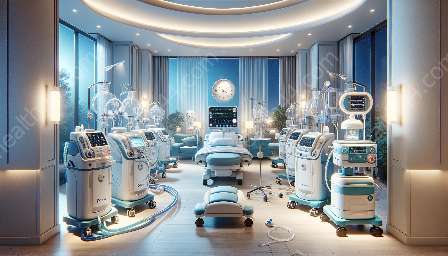Respiratory therapy encompasses a wide range of techniques and procedures aimed at aiding patients with respiratory issues in managing their conditions and improving their overall quality of life. These techniques are crucial to the field of respiratory care, often involving the use of various medical devices and equipment to deliver essential treatments and interventions.
Key Respiratory Therapy Techniques and Procedures
Here, we delve into some of the most important respiratory therapy techniques and procedures, exploring their relevance, applications, and their compatibility with respiratory care devices and medical equipment.
1. Airway Clearance Techniques
Airway clearance techniques are an essential part of respiratory therapy, especially for patients with conditions like cystic fibrosis, chronic obstructive pulmonary disease (COPD), and bronchiectasis. These techniques aim to clear mucus and other secretions from the airways to improve breathing and reduce the risk of respiratory infections.
Common airway clearance techniques include percussion and postural drainage, high-frequency chest wall oscillation, positive expiratory pressure devices, and oscillatory positive expiratory pressure devices. These techniques often require specialized devices and equipment designed to facilitate effective mucus clearance.
2. Oxygen Therapy
Oxygen therapy is a vital intervention for patients with respiratory insufficiency or hypoxemia. By providing supplemental oxygen, this therapy aims to increase the oxygen levels in the blood, alleviate the symptoms of hypoxia, and improve overall tissue oxygenation.
The administration of oxygen therapy can take various forms, including nasal cannulas, oxygen masks, and non-invasive ventilation devices. Understanding the compatibility of these delivery methods with different respiratory care devices and equipment is crucial for achieving optimal patient outcomes.
3. Mechanical Ventilation
Mechanical ventilation plays a critical role in supporting patients with severe respiratory failure or compromised lung function. Through the use of ventilators and related devices, mechanical ventilation assists patients in breathing by delivering air and oxygen into the lungs and removing carbon dioxide from the body.
Understanding the diverse range of mechanical ventilation strategies, including invasive and non-invasive ventilation, is essential for respiratory therapists and healthcare professionals. This knowledge enables the effective utilization of advanced medical devices and equipment to provide tailored support for patients in respiratory distress.
Respiratory Care Devices and Medical Equipment
Respiratory therapy techniques and procedures often intersect with a variety of respiratory care devices and medical equipment. These devices are integral to delivering essential treatments and monitoring patient progress throughout the course of therapy.
1. Nebulizers and Aerosol Therapy Devices
Nebulizers and aerosol therapy devices are used to deliver inhaled medications directly to the lungs, providing relief for conditions such as asthma, chronic bronchitis, and other respiratory diseases. Understanding the operation and maintenance of these devices is essential for optimizing drug delivery and ensuring patient adherence to prescribed therapies.
2. Positive Airway Pressure Devices
Positive airway pressure (PAP) devices, such as continuous positive airway pressure (CPAP) and bilevel positive airway pressure (BiPAP) machines, are commonly used in the management of sleep apnea and other respiratory conditions. These devices help maintain open airways and improve breathing patterns during sleep, contributing to enhanced patient comfort and well-being.
3. Pulse Oximeters and Oxygen Delivery Systems
Pulse oximeters and various oxygen delivery systems play a crucial role in monitoring oxygen saturation levels and ensuring the effective delivery of oxygen therapy. By understanding the function and utilization of these devices, healthcare providers can accurately assess a patient's respiratory status and adjust treatment plans accordingly.
4. Mechanical Ventilators
Mechanical ventilators are sophisticated respiratory care devices that provide life-sustaining support for patients with respiratory failure. Understanding the diverse modes of ventilation and the interplay between ventilator settings and patient physiology is essential for optimizing the management of critically ill patients.
Conclusion
Respiratory therapy techniques and procedures, along with the compatible respiratory care devices and medical equipment, form the cornerstone of comprehensive respiratory care. By gaining a deep understanding of these elements and their interconnections, healthcare professionals can deliver personalized, effective interventions that improve patient outcomes and enhance the overall quality of respiratory care.


